This is the story of my life so far: 67 years and counting.
Prequel: A Brief History of my Family in France
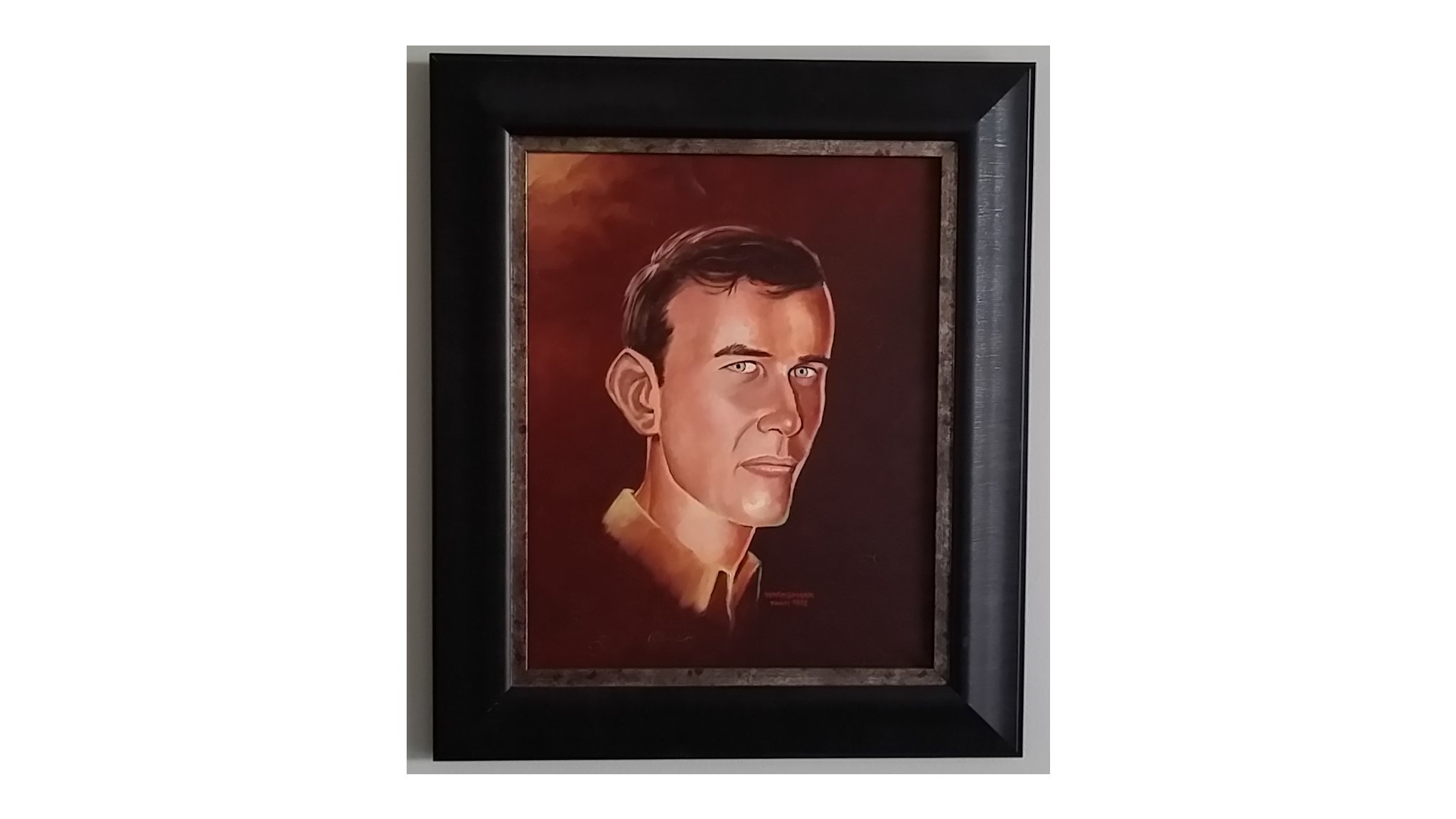
The story starts here
Previous episode: Part 38
The BDC Trieux in French Polynesia in 1971-1972
The job of the BDC Trieux and of the other two BDCs in Tahiti was to transport all kinds of goods to support the Centre d'expérimentation du Pacifique that was conducting nuclear tests on the atoll of Moruroa.
There were two main destinations: the atoll of Hao that was the support base at 500 nautical miles from Tahiti, and the atoll of Moruroa at 280 nautical miles of Hao.
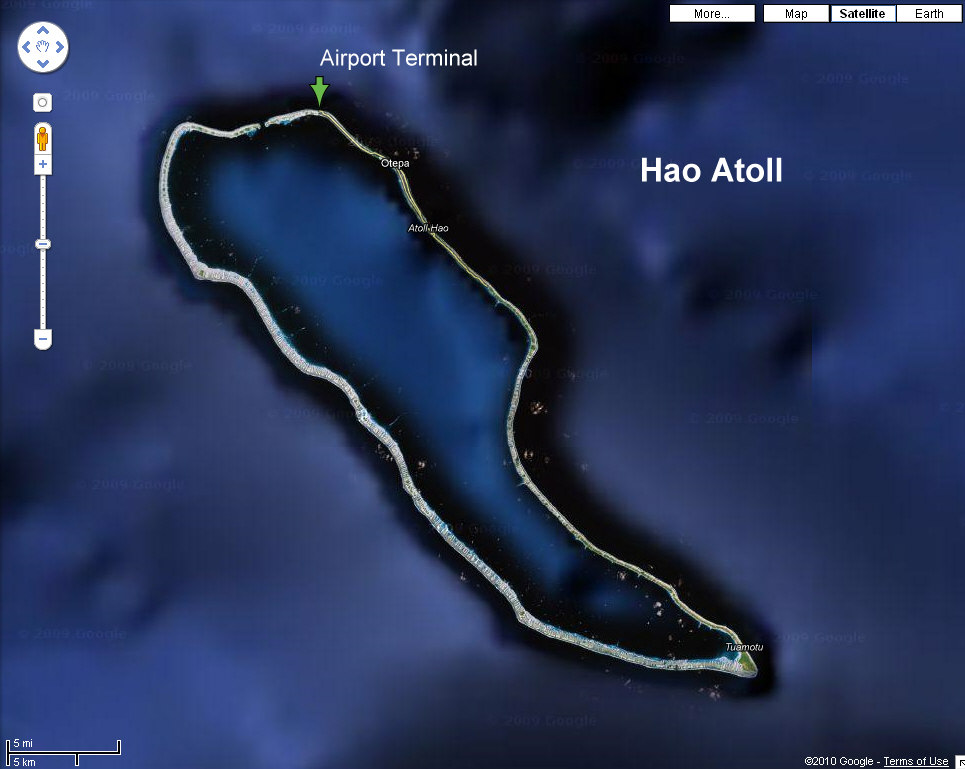
The Atoll of Hao
source
Hao is a fairly close atoll with a very narrow pass on the north side. Although the tides are not very big in the South Pacific (35 cm or less), the current in the pass may be quite strong because of the size of the lagoon. So, the Trieux needed to enter the lagoon only when the current was not too strong in either direction.
There was an airstrip on Hao so that military airplanes could transport people and urgent packages.
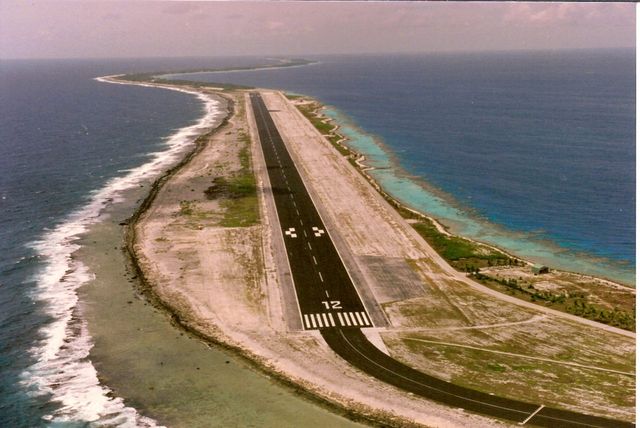
The Airstrip in Hao
source
When in Hao, the Trieux would be anchored from its bow and have its stern on a wharf so that goods could be loaded or unloaded easily.
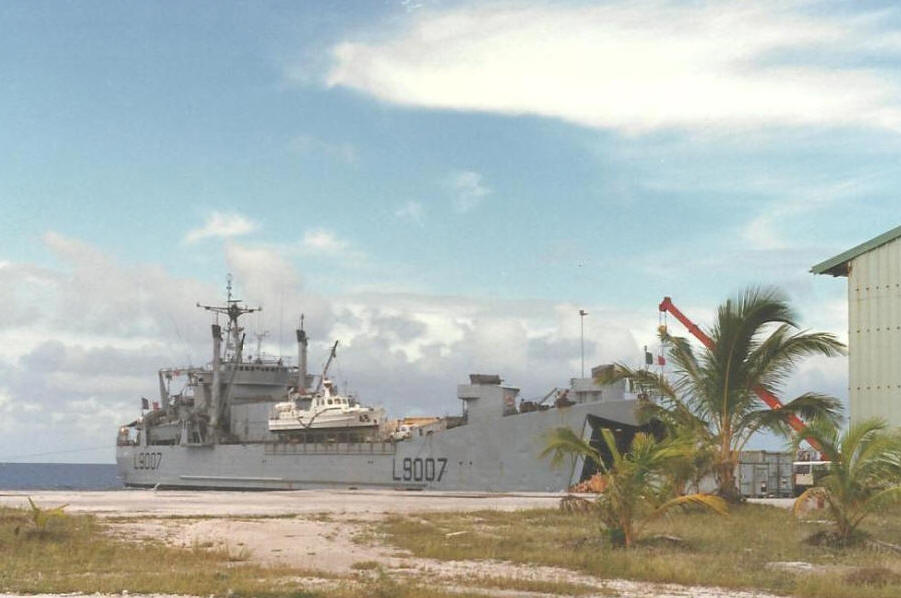
The Trieux in Hao
source
The atoll of Moruroa was much more open, so there was no problem of current to enter the lagoon.
Like Hao, there was an airstrip and a wharf.
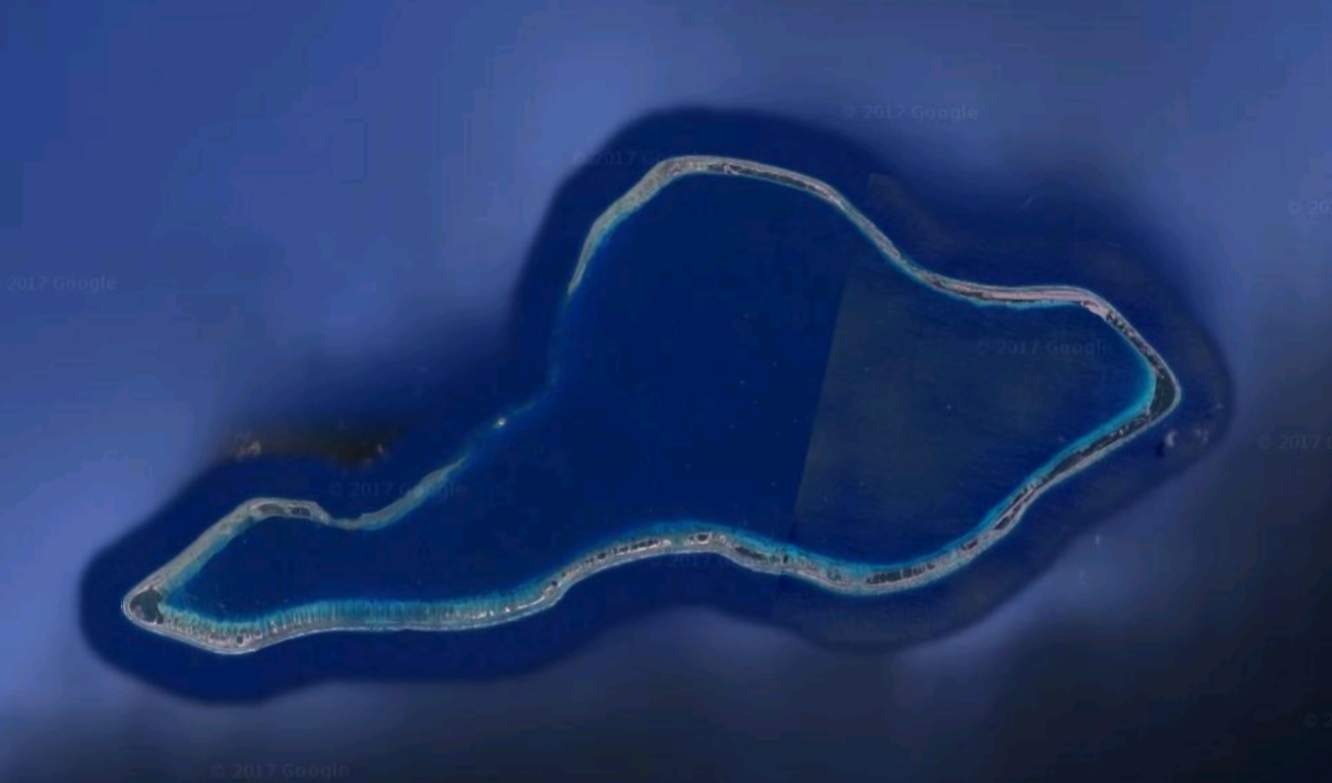
The Atoll of Moruroa
source: Google Maps
We would also transport some goods to various small atolls, either in support of military posts or to deliver big items to local inhabitants.
On these small atolls, there was no way to dock or to anchor. So, the Trieux would stay outside of the atoll, going at low speed to be still able to maneuver, and the goods would be delivered by cargo-sling by one or two helicopters.
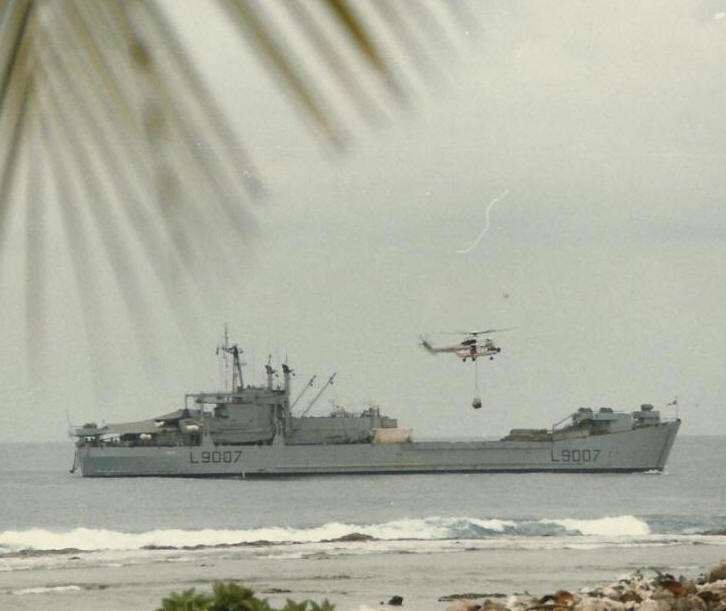
Cargo Sling on the Trieux
source
For very heavy or voluminous items, we would use what was called "baleinières" (whaleboat) that were staffed by Tahitians (the "baleiniers") that knew how to go over the coral reef with the swell.
For really voluminous items, such as a truck or a concrete mixer, the baleiniers would attach two baleinières together to make a "baleinière double" and would go over the coral reef.
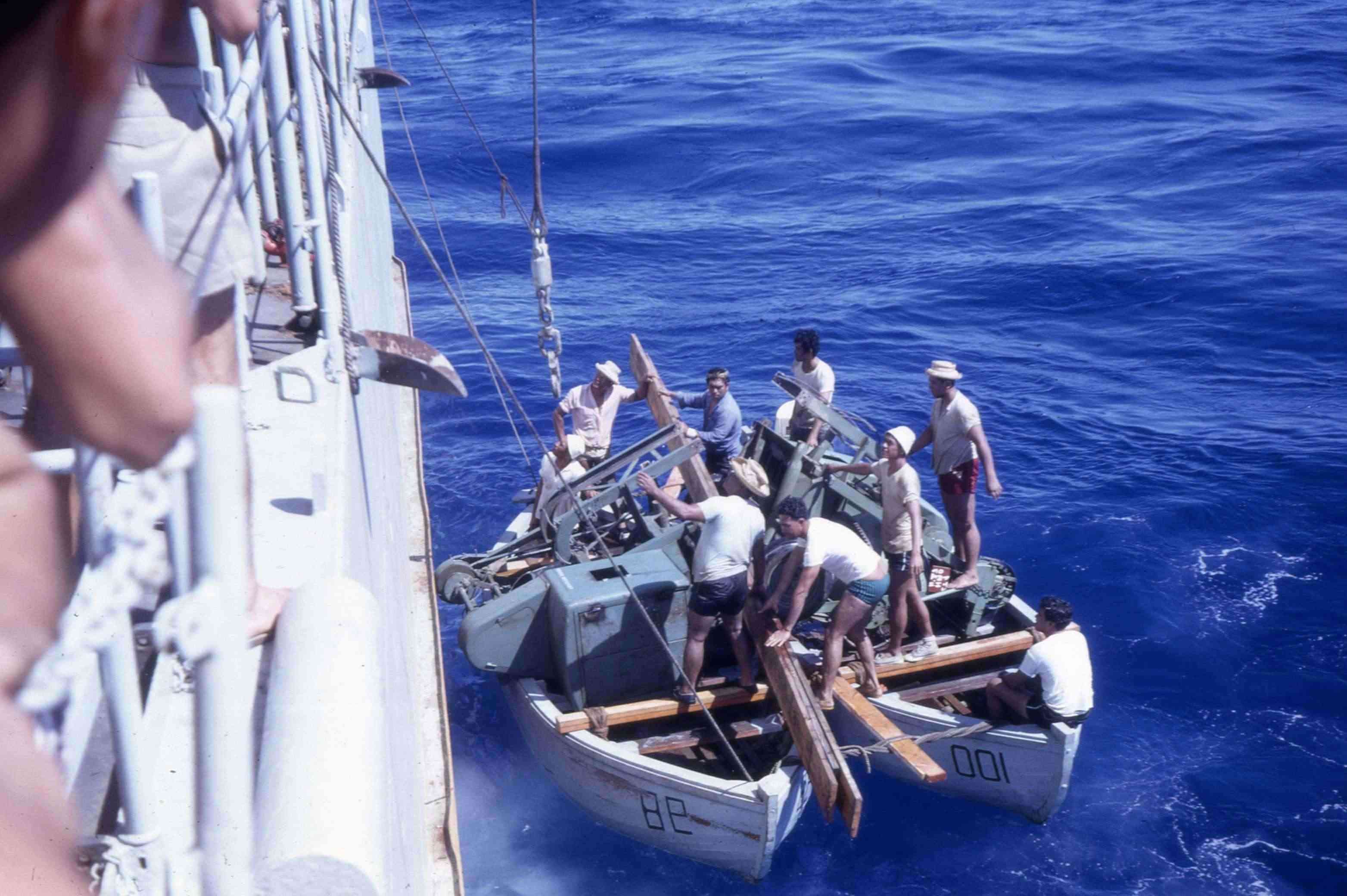
"Baleinière double" Loading Heavy Stuff
source
Continue to Part 40
If you like this story, please consider following me @vcelier
Summary
Part 1 - Part 2 - Part 3 - Part 4 - Part 5 - Part 6 - Part 7
Part 8 - Part 9 - Part 10 Part 11 - Part 12 - Part 13 - Part 14
Part 15 - Part 16 - Part 17 - Part 18 - Part 19 - Part 20 - Part 21
Part 22 - Part 23 - Part 24 - Part 25 - Part 26 - Part 27 - Part 28
Part 29 - Part 30 - Part 31 - Part 32 - Part 33 - Part 34 - Part 35
Part 36 - Part 37 - Part 38
Very intriguing story! I'm quite new at Steemit and just stumbled upon your blog page for the first time. Read and scrolled all the way down to your summary 8 months ago. What an amazing life you have had so far! And massive respect for raising you 4 adopted kids for 10 years, you're a hero! Keep up the posts, I'm following you now :)
Than you for your kind words.
Once again an interesting article. And slowly we approach a year of birth in 1973. I am already curious about your experiences.
Something very important in my life happened in the summer of 1973, Stay tuned!
Atols I've never heard of before. Unbelievable looking land-formations. I probably learned about it in school but that was some time ago. :)
Both look really magnificent. I wonder what kind of fish they have there. It's probably too cold to swim, right? Or, I may be mistaken. Did you guys swim anywhere there?
Too cold to swim!!! Are you kidding? The sea temperature is between 24°C and 28°C in French Polynesia, so no, it is not too cold to swim. If anything, the sea temperature is sometimes too high: swimming when the temperature of the sea is 30°C or higher is exhausting!
oh my, sounds like one can cook himself in there...and here I thought Pacific is cold :D I 've only seen it from Chile and Alaska, so...
You've really had some grand adventures.
I've been fascinated by these strange atolls since reading An Island to Oneself. It's the story of Tom Neale who fulfilled his life's ambition of giving up civilization and living completely alone on the atoll of Suwarrow for several decades. Although if I remember correctly he got quite sick at one point and was rescued by the lucky passage of a ship like yours. He had to fight the New Zealand government pretty hard for the right to go back.
(Actually the entire text of the book is available online here.)
I hope we won't lose these atolls to rising sea-levels. They're just fascinating.
Thank you for the pointer to the book from Tom Neale.
click here.Congratulations @vcelier, this post is the seventh most rewarded post (based on pending payouts) in the last 12 hours written by a Superhero or Legend account holder (accounts hold greater than 100 Mega Vests). The total number of posts by Superhero and Legend account holders during this period was 26 and the total pending payments to posts in these categories was $864.51. To see the full list of highest paid posts across all accounts categories,
If you do not wish to receive these messages in future, please reply stop to this comment.
Very nice completion of post! Loved the pictures and description. Resteemed.
I never knew about this island! Thanks for sharing this information and I will also check the other parts of the story as well!
Which one? Hao or Moruroa?
Nice story..., There are many means... Always make me interesting..
goood story

great story friend, very good content, you are a persevering person and quite a fighter, I congratulate you great man
Good job
It seems that this is the climax of logistics. Maneuvering such a large ship in such tiny premises with the current in mind should be a difficult task, not taking into account the wind alone.
Maneuvering even a small boat like a yacht is already difficult and just thinking of inertia of such a big vessel makes to respect the crew.